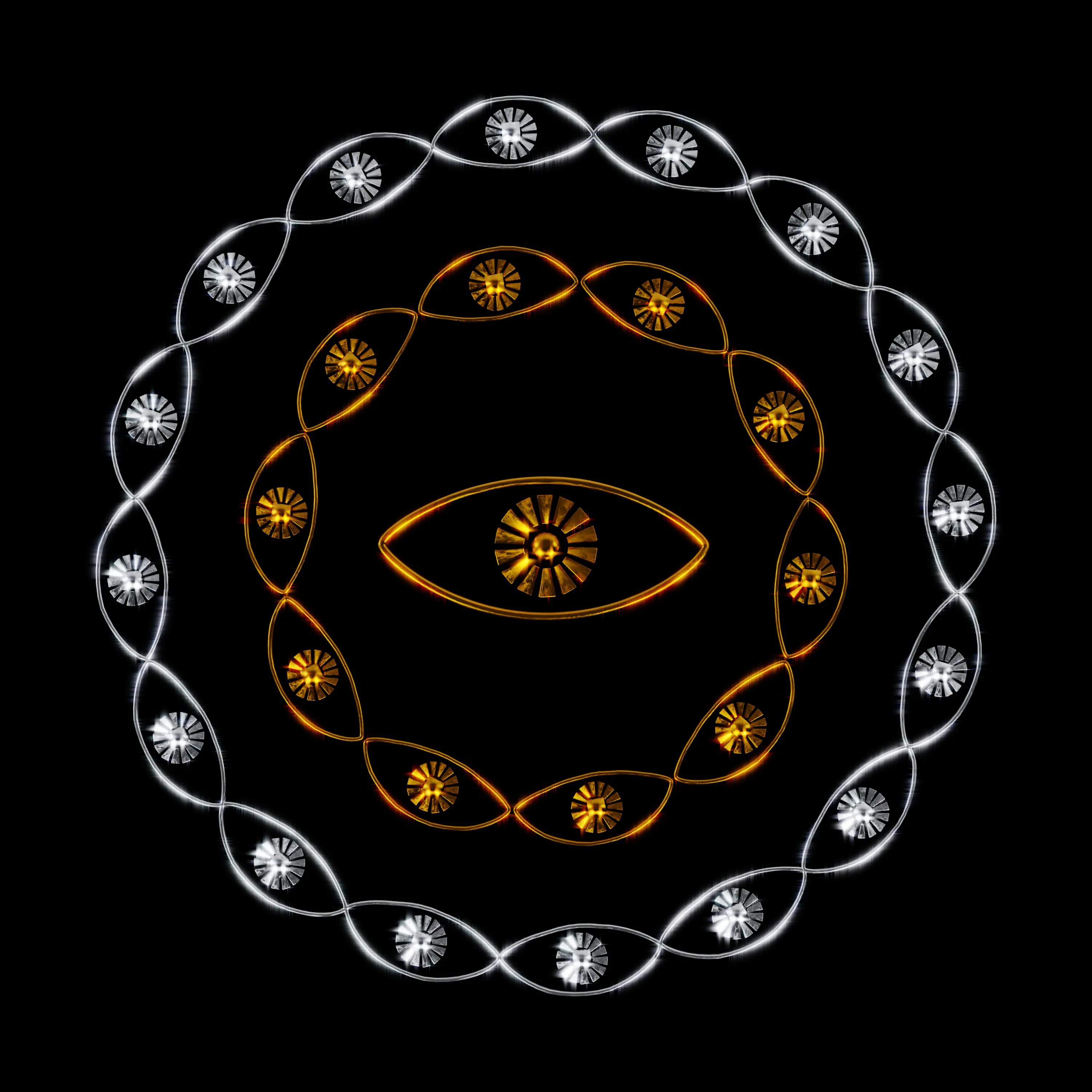Tratak vs Dot, Yantra, and Black Circle Gazing
Info
👁️ Visual meditation comes in many forms. This guide compares Tratak (candle gazing) with other popular visual concentration techniques to help you choose the right practice for your goals.
🎯 Introduction: The Art of Visual Focus
Visual meditation techniques have been used across cultures for millennia to develop concentration, inner stillness, and heightened awareness. While Tratak (candle flame gazing) is perhaps the most well-known, practitioners also use dot gazing, yantra meditation, and black circle concentration to achieve similar states of focused attention.
Each technique offers unique benefits and challenges. This comprehensive comparison will help you understand which visual meditation method aligns best with your practice goals and personal preferences.

🔥 Tratak: The Living Light
Tratak involves gazing steadily at a candle flame, traditionally practiced in two phases: external gazing until tears form, followed by internal visualization with closed eyes.
Key Characteristics:
- Visual Target: Living flame with natural movement
- Light Quality: Warm, dynamic, luminous
- Complexity: Simple yet ever-changing
- Sensory Engagement: Visual + thermal (warmth)
- Traditional Context: Hatha Yoga shatkarma (purification practice)
Benefits:
- ✅ Natural magnetism: Flame naturally draws attention
- ✅ Calming warmth: Creates cozy, meditative atmosphere
- ✅ Dynamic stability: Movement within stillness teaches adaptability
- ✅ Afterimage training: Strong visual imprint for internal practice
- ✅ Eye health: May improve focus and reduce digital strain
Challenges:
- ⚠️ Fire safety: Requires careful setup and supervision
- ⚠️ Environmental factors: Affected by drafts and air movement
- ⚠️ Brightness sensitivity: May be too intense for some practitioners
- ⚠️ Tears and blinking: Natural eye responses can interrupt focus
⚫ Dot Gazing: Minimalist Precision
Dot gazing involves focusing on a small black dot, typically drawn on white paper or displayed on a screen, placed at eye level.

Key Characteristics:
- Visual Target: Static geometric point
- Light Quality: High contrast (black on white)
- Complexity: Minimal, unchanging
- Sensory Engagement: Pure visual
- Traditional Context: Modern adaptation of ancient concentration techniques
Benefits:
- ✅ Ultimate simplicity: Easy to create and practice anywhere
- ✅ No distractions: Completely static target
- ✅ High contrast: Clear, defined focus point
- ✅ Portable: Can be practiced with paper, phone, or computer
- ✅ Safe: No fire or safety concerns
Challenges:
- ⚠️ Lack of magnetism: May be harder to maintain interest
- ⚠️ Eye strain: High contrast can cause fatigue
- ⚠️ Monotony: Static nature may lead to boredom
- ⚠️ Weak afterimage: Less vivid internal visualization
🕉️ Yantra Meditation: Sacred Geometry
Yantra meditation uses geometric patterns, often featuring intricate designs with spiritual symbolism, as focal points for concentration.

Key Characteristics:
- Visual Target: Complex geometric patterns
- Light Quality: Varied (depends on design and colors)
- Complexity: High, with multiple layers of meaning
- Sensory Engagement: Visual + symbolic/spiritual
- Traditional Context: Hindu and Buddhist tantric practices
Benefits:
- ✅ Rich symbolism: Engages both mind and spirit
- ✅ Multiple focus points: Can progress from outer to inner elements
- ✅ Aesthetic appeal: Beautiful designs maintain interest
- ✅ Cultural depth: Connected to ancient wisdom traditions
- ✅ Layered practice: Suitable for both beginners and advanced practitioners
Challenges:
- ⚠️ Complexity overload: Too many elements may scatter attention
- ⚠️ Cultural barriers: May not resonate with all practitioners
- ⚠️ Preparation required: Need quality yantra images or drawings
- ⚠️ Interpretation confusion: Symbolic meanings may distract from pure concentration
⚫ Black Circle Gazing: The Void Approach
Black circle meditation involves gazing at a solid black circle, representing emptiness or the void, often used in Zen and minimalist meditation traditions.

Key Characteristics:
- Visual Target: Solid black circle
- Light Quality: Light-absorbing, non-reflective
- Complexity: Simple form, profound concept
- Sensory Engagement: Visual + philosophical
- Traditional Context: Zen Buddhism, void meditation
Benefits:
- ✅ Void contemplation: Encourages letting go and emptiness
- ✅ Gentle on eyes: Non-glaring, soft visual target
- ✅ Philosophical depth: Connects to concepts of emptiness and non-attachment
- ✅ Calming effect: Dark colors promote relaxation
- ✅ Simple setup: Easy to create and practice
Challenges:
- ⚠️ Abstract concept: Void meditation may be difficult for beginners
- ⚠️ Less engaging: May not hold attention as effectively
- ⚠️ Drowsiness risk: Dark colors may promote sleepiness
- ⚠️ Limited afterimage: Weak visual imprint for internal practice
📊 Comprehensive Comparison Table
| Aspect | Tratak (Flame) | Dot Gazing | Yantra | Black Circle |
|---|---|---|---|---|
| Setup Difficulty | Medium | Easy | Easy | Easy |
| Safety Concerns | High | None | None | None |
| Visual Appeal | High | Low | Very High | Medium |
| Beginner Friendly | Medium | High | Low | Medium |
| Afterimage Strength | Very Strong | Weak | Medium | Weak |
| Eye Strain Risk | Low | Medium | Low | Very Low |
| Spiritual Depth | High | Low | Very High | High |
| Portability | Low | Very High | High | High |
| Cost | Low | None | Low | None |
| Maintenance | Medium | None | None | None |
🎯 Which Technique Should You Choose?
Choose Tratak if you:
- Want a traditional, time-tested practice
- Enjoy the warmth and ambiance of candlelight
- Seek strong afterimage experiences
- Don’t mind safety considerations
- Want to combine meditation with eye health benefits
Choose Dot Gazing if you:
- Prefer maximum simplicity
- Need a portable practice
- Want to avoid any safety concerns
- Are just starting with visual meditation
- Practice in environments where candles aren’t suitable
Choose Yantra Meditation if you:
- Are drawn to sacred geometry and symbolism
- Want a practice with spiritual depth
- Enjoy complex, beautiful visual designs
- Have experience with concentration practices
- Connect with Hindu or Buddhist traditions
Choose Black Circle if you:
- Are interested in void meditation and emptiness
- Prefer gentle, non-stimulating visuals
- Want to explore Zen-style practices
- Have sensitive eyes
- Seek a philosophical approach to meditation
🔄 Progressive Practice Approach
Many practitioners benefit from exploring multiple techniques:
- Start with Dot Gazing - Build basic concentration skills
- Progress to Tratak - Experience dynamic visual meditation
- Explore Yantra - Add spiritual and symbolic dimensions
- Experiment with Black Circle - Deepen void contemplation
This progression allows you to develop different aspects of visual concentration while discovering your personal preferences.
💡 Practical Tips for All Techniques
Tip
Universal Guidelines for Visual Meditation:
- Practice in a quiet, dimly lit environment
- Sit with spine straight, shoulders relaxed
- Place visual target at eye level, 3-6 feet away
- Start with 5-10 minutes, gradually increase duration
- Blink naturally when needed, then return focus gently
- End with a few minutes of closed-eye meditation
Safety Considerations:
- Tratak: Ensure fire safety, proper ventilation, and stable candle placement
- Screen-based practices: Use blue light filters and take regular breaks
- All techniques: Stop if you experience persistent eye strain or discomfort
For comprehensive safety guidelines, see our safety tips guide.
🧠 Scientific Perspective
Research on visual meditation techniques shows:
- Sustained attention: All methods improve concentration and reduce mind-wandering
- Alpha waves: Visual focus increases relaxed alertness brainwave patterns
- Eye movement: Steady gazing reduces saccadic eye movements and improves visual stability
- Stress reduction: Visual meditation activates parasympathetic nervous system responses
While Tratak has the most research, all visual meditation techniques share similar neurological benefits related to attention training and stress reduction.
✅ Conclusion: Finding Your Visual Path
Each visual meditation technique offers a unique pathway to concentration, inner stillness, and heightened awareness. Tratak provides dynamic engagement with living light, dot gazing offers pure simplicity, yantra meditation combines beauty with spiritual depth, and black circle gazing explores the profound concept of emptiness.
The best technique is the one that resonates with your temperament, goals, and circumstances. Consider experimenting with different approaches to discover which visual anchor most effectively guides you toward the stillness and clarity you seek.
To deepen your understanding of visual meditation principles, explore our guide on the science behind Tratak.
📚 References
- Swami Satyananda Saraswati. Asana Pranayama Mudra Bandha. Bihar School of Yoga.
- Raghavendra, B.R. et al. (2021). Effect of Trataka on Cognitive Functions. PMC
- Khanna, A. & Greeson, J.M. (2013). A narrative review of yoga and mindfulness as complementary therapies. Complementary Therapies in Medicine.
- Gard, T. et al. (2014). Fluid intelligence and brain functional organization in aging yoga and meditation practitioners. Frontiers in Aging Neuroscience.
- Lutz, A. et al. (2004). Long-term meditators self-induce high-amplitude gamma synchrony. PNAS.